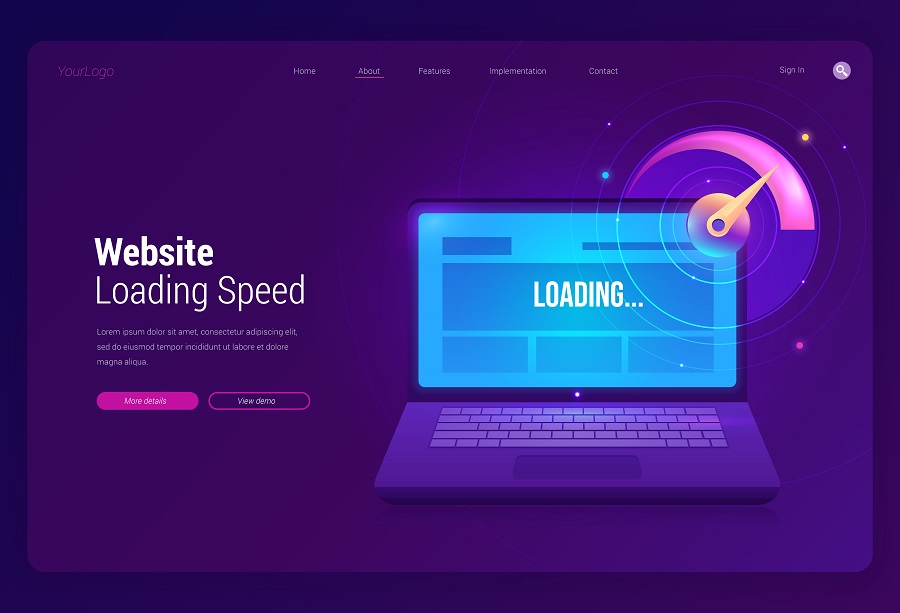- Branding and Visual Design
- Strategy and Usability
- Web Design and Development
- Content Management Systems
- Data Visualization
- Database and CRM
- Online Marketing, Social Media, and SEO
- Site Management and Enhancement
- Monitoring and Backup
Speed Optimization Strategies for WordPress Sites

If you’re running a WordPress site, you know how crucial speed is for keeping visitors engaged and ranking well in search results. You can boost performance with a few targeted strategies, but it takes more than just installing a plugin. From streamlining plugins to fine-tuning your database, you’ll want to address both front-end and back-end issues. Curious how to cut load times without sacrificing features or design?
Key Factors Affecting WordPress Site Speed
The speed of a WordPress site is influenced by several key factors. Unoptimized images can significantly increase page size, leading to longer load times and potentially causing visitors to leave the site. Similarly, excessive or inefficiently coded plugins can burden the website's backend, resulting in additional database queries and delays that may negatively impact conversion rates. Utilizing WordPress Hosting that is optimized for performance can help reduce these issues by ensuring proper server resources and faster load times.
Outdated themes, especially those with unused features, contribute to unnecessary resource consumption and can adversely affect Core Web Vitals scores, which are critical for both user experience and search engine rankings. A cluttered database filled with elements like spam comments and old revisions can also slow down page loading times. Additionally, using shared hosting can result in slower performance due to resource competition from other websites on the same server.
Essential Techniques for Improving Performance
To enhance the speed of a WordPress site, several practical strategies can be employed.
Implementing a caching plugin, such as WP Rocket, can significantly improve performance by serving static HTML pages, potentially increasing site speed by a factor of two to five.
Image optimization is another critical step; utilizing a tool like Imagify can reduce image file sizes substantially, which is important since images often contribute heavily to page weight.
Additionally, enabling lazy loading for images and videos ensures that these elements load only when they're visible to the user, thereby decreasing initial page load times.
Regular database maintenance is also recommended, as it helps remove unnecessary data like spam and revisions, reducing query delays and promoting a more responsive site performance.
These measures collectively can provide a more efficient user experience without resorting to exaggerated claims of improvement.
Choosing and Managing Themes, Plugins, and Tools
To maintain a fast and efficient WordPress site as it expands, it's advisable to select a lightweight theme, as themes with excessive features can increase page load times by up to 20%.
Keeping plugins updated is crucial, as outdated plugins can negatively impact performance and lead to slower server responses.
It's also important to limit the number of active plugins; running more than 20 plugins can cause a 15-30% decrease in site speed.
Utilizing tools like Google PageSpeed Insights can help identify compatibility issues between plugins and themes early on.
Additionally, employing optimization tools such as WP Rocket can improve Core Web Vitals through features like image LazyLoading.
These steps can contribute to maintaining optimal site performance.
Optimizing and Maintaining Your Database
Maintaining an efficient WordPress database is crucial for ensuring that your website remains fast and responsive.
Regular maintenance activities, such as removing spam comments, post revisions, and transient data, can significantly reduce the size of your database and improve page load times.
A database filled with unnecessary data can slow down query responses and increase loading times, particularly on high-traffic sites.
Utilizing tools like SG Optimizer can help automate the cleanup process and eliminate unused data effectively.
It's also important to optimize database tables and remove orphan records to prevent potential performance issues.
Scheduling regular database maintenance is recommended, as even smaller websites can accumulate extraneous data that may negatively affect user experience and SEO rankings over time.
Monitoring, Measuring, and Troubleshooting Site Speed
To effectively manage your WordPress site's performance, it's crucial to monitor and measure site speed regularly, identifying any factors that may hinder performance.
Utilizing Google PageSpeed Insights allows for the measurement of real-user data, helping to identify issues such as slow-loading images or render-blocking resources.
Monitoring Core Web Vitals, particularly the Largest Contentful Paint, is essential to ensure loading times are kept under the recommended 2.5 seconds.
Benchmarking your site with tools like GTmetrix provides an analysis of important metrics, including Time to First Byte and JavaScript delays, which can guide optimization efforts.
Additionally, reviewing WebPageTest reports can help identify bottlenecks, and subsequent testing using the WordPress Speed Test tool can confirm improvements, with a goal of achieving loading times under two seconds.
This approach ensures a systematic evaluation and enhancement of site speed, contributing to better user experience and potentially improving search engine rankings.
Conclusion
You’ve got all the tools and strategies to massively speed up your WordPress site. By choosing lightweight themes, using only essential plugins, optimizing images, and enabling caching, you’ll see performance gains fast. Keep your database clean and continuously monitor your speed with tools like Google PageSpeed Insights. With these smart moves, you’re set to deliver a fast, smooth experience for your visitors—and boost your site’s rankings and Core Web Vitals scores, too.